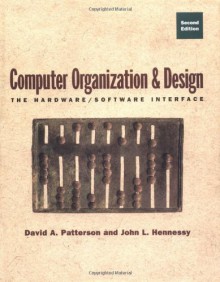
This textbook was required reading for my Computer Organization and Architecture university course. Sometimes it can be difficult to give a textbook a fair review because, in a typical course, students are rarely required to read the entire book and they may be given reading assignments that are not in sequential order. This means it’s not easy to judge the progression of the material as presented in the textbook from beginning to end.
Such was the case with this textbook. In my class, we skipped around and read different sections from different chapters rather than reading any single chapter all the way through. One thing I was impressed with, given how much we skipped around, was how easy it was to pick up each section we were asked to read. Even if it was a section in the middle of a chapter we hadn’t read from before.
Unlike some textbooks I’ve read, there weren’t any cryptic terms or acronyms that I couldn’t easily find the definition to. Definitions for new terminology were noted in the margins, making it easy to refer back to them if needed. In general, explanations were clear and the examples were good. However, there were quite a few grammatical/spelling errors and there was some awkward phrasing that required rereading in order to understand what the authors were trying to convey. Sometimes they skipped intermediate topics, such as jumping from a single-cycle datapath to a pipelined datapath without covering the multi-cycle datapath which I understand was in previous editions of the book. My university course provided very good supplementary content and I found the concepts easy to understand when presented in that logical progression. I might have struggled more if I had been limited to the book's presentation, but it's hard to say for sure since I wasn't in that position.
I don’t normally comment much on the physical aspect of books I read, but this book was literally falling apart as I read it. School textbooks are the only type of book that I still purchase in a physical format, and this textbook was no exception. I saw a couple reviews on Amazon where reviewers mentioned that their pages fell out, but I needed the textbook and I wanted it in a physical format, so I bought it with the plan to be extra careful with the pages. Sure enough, as soon as I started reading, pages started randomly falling out. I would gingerly turn a page, and sometimes the page would turn and come out of the book. I don’t resell my textbooks, but anybody who does probably wouldn’t be able to resell this one. Maybe that was the goal…
The falling pages became quite a problem for me because I took several business trips while taking this course and I was afraid to travel with the book. I didn’t want to have pages falling out all over the place and getting lost where I would never find them again, and I figured the flimsy book would never survive my laptop bag or my suitcase, so I purchased the e-book version of the textbook to use while traveling. The e-book version had its own issues. There weren’t any page numbers, which could be a problem when I needed to reference specific pages for my class, and the tables and diagrams were very small. I was reading on a 10.5” tablet, with a screen nearly as big as the pages in the physical book, but the size in the e-book was drastically different from the size on the printed page and did not fully utilize the space. I constantly had to zoom in on them so I could read them, which meant I couldn’t see them in context with the text on the page. Perhaps all of this is normal with e-textbooks; I haven’t read enough of textbooks in this format to know. It definitely frustrated me, though.

 Log in with Facebook
Log in with Facebook 









